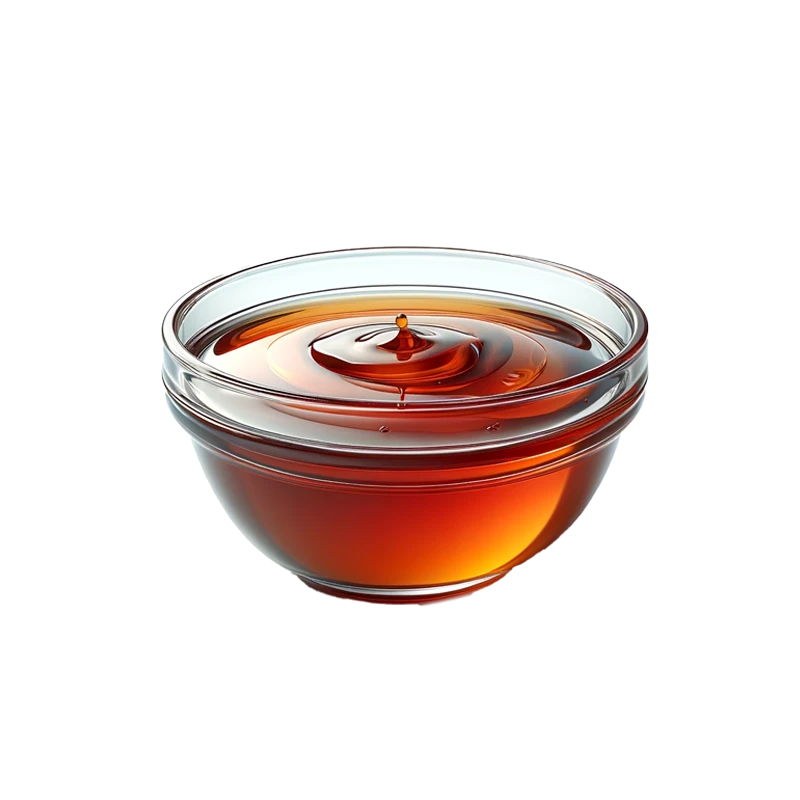Maple Syrup — Nutrients, Health Benefits, And Shopping Tips

Written by Listonic Team
Last update on September 4, 2024
Nutrition facts
Nutrition facts
Amount per 100 g
Calories
🔥 260 kcal
| Nutrition per: 100 g | Value | % Daily Value* |
|---|---|---|
| Carbs | 67 g | 24.36% |
| Fiber | 0 g | - |
| Sugars | 61 g | 122% |
| Glycemic Index | 54 | - |
| Protein | 0 g | - |
| Sodium | 12 mg | 0.52% |
| Total Fat | 0 g | - |
*The % of Daily Value (DV) tells you how much a nutrient in a serving of food contributes to a daily diet. 2,000 calories a day is used for general nutrition advice.
54
🟢 Low Glycemic Index
Did you know?
Health benefits
- Contains antioxidants such as phenolic compounds, which help protect the body from free radicals and reduce inflammation.
- Provides essential minerals such as zinc and manganese, which support immune function and overall health.
- Lower glycemic index compared to refined sugar, potentially causing less of a spike in blood sugar levels.
- Natural sweetener, providing a more wholesome alternative to processed sugars.
Health risks
- High sugar content which can contribute to weight gain, tooth decay, and increased risk of diabetes when consumed frequently.
- High calorie content which can contribute to weight gain if consumed in large quantities, especially when paired with high-calorie foods like pancakes or waffles.
- Low nutrient density despite containing some minerals, maple syrup is primarily composed of sugar and offers limited nutritional value.
- Potential for contamination with mold or other toxins if the syrup is not properly processed, stored, or handled.
How to choose maple syrup
Maple syrup should have a clear, amber color and a smooth, fluid consistency that pours easily. It should be free from any sediment or cloudiness. The flavor should be rich and sweet, with subtle notes of caramel and vanilla.
Steer clear of maple syrup that is overly thick or crystallized, which can indicate improper storage or aging. Good maple syrup should coat the palate luxuriously, enhancing pancakes, waffles, and a variety of desserts with its natural sweetness.

How to store maple syrup
Unopened maple syrup should be kept in a cool, dark place. Once opened, store it in the refrigerator to prevent mold growth and maintain its flavor. Properly stored, opened maple syrup can last for up to a year.
Leaving opened maple syrup at room temperature can lead to fermentation and spoilage. Avoid storing it in the original tin once opened, as it can impart a metallic taste. Transfer to a glass or plastic container and ensure the lid is tightly sealed.
✅ Extra Tip
How long does it last?
Maple syrup can last for 1-2 years unopened when stored in a cool, dark place. Once opened, it should be refrigerated and used within 6-12 months.
What to do with leftovers?
Leftover maple syrup can be used in a variety of sweet and savory dishes. Drizzle it over pancakes, waffles, or French toast for a classic breakfast treat, or mix it into oatmeal or yogurt for added sweetness. Maple syrup is also great when used as a sweetener in baking, where it can add moisture and flavor to cakes, muffins, or cookies.
Use maple syrup as a glaze for roasted meats like ham or pork, where its sweetness pairs beautifully with savory flavors. If you have a lot of maple syrup, consider making a batch of maple butter or maple-flavored whipped cream to serve with desserts. Maple syrup can also be mixed into salad dressings with mustard and vinegar, or stirred into cocktails for a sweet twist. For a quick snack, drizzle maple syrup over fresh fruit, or use it as a dip for apple slices or roasted nuts.
👨⚕️️ Medical disclaimer
Discover products from other categories
Listonic Team
Fact-checked
Our editorial team checked this article to make sure it was accurate at the time of publishing it.
Get the top-rated shopping list app on your phone!







